Showing Spotlights 41 - 48 of 161 in category All (newest first):
 The structure of individual molecules and their properties, such as chirality, are difficult to monitor in real time. It turns out that temporarily bridging molecules together can provide a lens into their dynamics. Scientists now have exposed new pathways for investigating biochemical reactions at the nanoscale. They found that optoplasmonic coupling allows for the detection of biomolecules that approach nanoparticles, while they attach, detach, and interact in a variety of ways. The technique paves the way for many future single-molecule analysis techniques that researchers have only been dreaming about.
The structure of individual molecules and their properties, such as chirality, are difficult to monitor in real time. It turns out that temporarily bridging molecules together can provide a lens into their dynamics. Scientists now have exposed new pathways for investigating biochemical reactions at the nanoscale. They found that optoplasmonic coupling allows for the detection of biomolecules that approach nanoparticles, while they attach, detach, and interact in a variety of ways. The technique paves the way for many future single-molecule analysis techniques that researchers have only been dreaming about.
May 6th, 2020
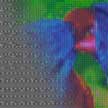 Similar to the way painters mix different hues and tones of colors on their palette, researchers demonstrated a method for continuous mixing of different structural colors at the nanoscale on a single pixel. This novel method for structurally generating and mixing vivid colors additively is based on interleaved rectangular lattices of metallic nanoparticles. This coloring approach offers a large individual control over the chromaticity and luminance of the generated colors.
Similar to the way painters mix different hues and tones of colors on their palette, researchers demonstrated a method for continuous mixing of different structural colors at the nanoscale on a single pixel. This novel method for structurally generating and mixing vivid colors additively is based on interleaved rectangular lattices of metallic nanoparticles. This coloring approach offers a large individual control over the chromaticity and luminance of the generated colors.
Feb 18th, 2020
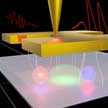 Electronic transitions between confined states within a quantum well are widely used in optoelectronics. Familiar examples include quantum cascade lasers and quantum well infrared photodetectors, which can operate in a wide range of wavelengths, from the far- to near-infrared. There is growing interest in studying this phenomenon because it may enable novel devices such as polariton lasers and because the physics of ISB polaritons is relatively unexplored. Researchers now demonstrated that it is possible to study polaritons in a single isolated nanoantenna.
Electronic transitions between confined states within a quantum well are widely used in optoelectronics. Familiar examples include quantum cascade lasers and quantum well infrared photodetectors, which can operate in a wide range of wavelengths, from the far- to near-infrared. There is growing interest in studying this phenomenon because it may enable novel devices such as polariton lasers and because the physics of ISB polaritons is relatively unexplored. Researchers now demonstrated that it is possible to study polaritons in a single isolated nanoantenna.
Jun 18th, 2019
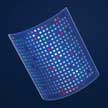 Electronic device versions of the human eye's photoreceptors could potentially be used in a wide range of applications from robotic humanoid vision to artificial retina implantation for vision restoration or even vision extension into a wider range of wavelength. Researchers have now demonstrated that high-performance filterless artificial human photoreceptors can be realized by integrating a novel optical metal/dielectric/metal microcavity structure with vacuum-deposited perovskite photoresponse devices. These easy-to-fabricate artificial photosensors mimic the spectral responses of human color cones and rods.
Electronic device versions of the human eye's photoreceptors could potentially be used in a wide range of applications from robotic humanoid vision to artificial retina implantation for vision restoration or even vision extension into a wider range of wavelength. Researchers have now demonstrated that high-performance filterless artificial human photoreceptors can be realized by integrating a novel optical metal/dielectric/metal microcavity structure with vacuum-deposited perovskite photoresponse devices. These easy-to-fabricate artificial photosensors mimic the spectral responses of human color cones and rods.
May 1st, 2019
 Researchers demonstrate, for the first time, a tellurium@selenium (Te@Se) heterostructure used as a working material in a photoelectrochemical-type photodetector. Specifically, Te@Se nanotube heterojunctions synthesized by epitaxial growth of selenium on tellurium nanotubes exhibit a largely enhanced self-powered photoresponse, significantly improved photocurrent density, and photoresponsivity compared to those of Te or Se nanomaterials.
Researchers demonstrate, for the first time, a tellurium@selenium (Te@Se) heterostructure used as a working material in a photoelectrochemical-type photodetector. Specifically, Te@Se nanotube heterojunctions synthesized by epitaxial growth of selenium on tellurium nanotubes exhibit a largely enhanced self-powered photoresponse, significantly improved photocurrent density, and photoresponsivity compared to those of Te or Se nanomaterials.
Apr 25th, 2019
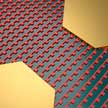 Terahertz (THz) frequencies, which occupy a middle ground between microwaves and infrared light, are seen as the future of wireless communications because they offer a higher bandwidth capacity for data transmission than currently used microwave radiation. Researchers have improved the photoconductive switch, a key optoelectronic element in THz technology, with a perfectly-absorbing photoconductive metasurface. The perfect absorption within this metasurface allows to make the active region of THz wave detectors significantly thinner in comparison to conventional detectors. Apart from reducing the size of THz detectors, it also improves their efficiency.
Terahertz (THz) frequencies, which occupy a middle ground between microwaves and infrared light, are seen as the future of wireless communications because they offer a higher bandwidth capacity for data transmission than currently used microwave radiation. Researchers have improved the photoconductive switch, a key optoelectronic element in THz technology, with a perfectly-absorbing photoconductive metasurface. The perfect absorption within this metasurface allows to make the active region of THz wave detectors significantly thinner in comparison to conventional detectors. Apart from reducing the size of THz detectors, it also improves their efficiency.
Apr 24th, 2019
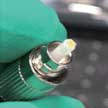 Polymer composite films, particularly those based on polymers and layered nanomaterials, are attractive materials for exploiting the properties of multiple materials for applications in electronics and photonics. Recently, scientists have found that beta-lead oxide quantum dot /polystyrene composite films exhibit excellent stability in high humidity and strong saturable absorption response from visible to the near-infrared region. This makes them an attractive material for practical applications in optoelectronic devices in marine environments and other harsh condition, such as humid weather.
Polymer composite films, particularly those based on polymers and layered nanomaterials, are attractive materials for exploiting the properties of multiple materials for applications in electronics and photonics. Recently, scientists have found that beta-lead oxide quantum dot /polystyrene composite films exhibit excellent stability in high humidity and strong saturable absorption response from visible to the near-infrared region. This makes them an attractive material for practical applications in optoelectronic devices in marine environments and other harsh condition, such as humid weather.
Apr 8th, 2019
 In recent years, all-optical modulators (AOMs) have attracted significant interests due to their low power consumption, broad bandwidth, and potential in all-optical fields. Among these, AOMs based on the high photothermal efficiency of antimonene, exhibit remarkable advantages for their large modulation depth, wide operating wavelength range, and easy implementation.
Researchers demonstrated that an antimonene-based AOM was successfully utilized to actively Q-switch a fiber laser in a fully photonics domain and this actively modulated laser represented all-optically tunable output parameters, and easy time synchronization.
In recent years, all-optical modulators (AOMs) have attracted significant interests due to their low power consumption, broad bandwidth, and potential in all-optical fields. Among these, AOMs based on the high photothermal efficiency of antimonene, exhibit remarkable advantages for their large modulation depth, wide operating wavelength range, and easy implementation.
Researchers demonstrated that an antimonene-based AOM was successfully utilized to actively Q-switch a fiber laser in a fully photonics domain and this actively modulated laser represented all-optically tunable output parameters, and easy time synchronization.
Mar 15th, 2019
 The structure of individual molecules and their properties, such as chirality, are difficult to monitor in real time. It turns out that temporarily bridging molecules together can provide a lens into their dynamics. Scientists now have exposed new pathways for investigating biochemical reactions at the nanoscale. They found that optoplasmonic coupling allows for the detection of biomolecules that approach nanoparticles, while they attach, detach, and interact in a variety of ways. The technique paves the way for many future single-molecule analysis techniques that researchers have only been dreaming about.
The structure of individual molecules and their properties, such as chirality, are difficult to monitor in real time. It turns out that temporarily bridging molecules together can provide a lens into their dynamics. Scientists now have exposed new pathways for investigating biochemical reactions at the nanoscale. They found that optoplasmonic coupling allows for the detection of biomolecules that approach nanoparticles, while they attach, detach, and interact in a variety of ways. The technique paves the way for many future single-molecule analysis techniques that researchers have only been dreaming about.
 Subscribe to our Nanotechnology Spotlight feed
Subscribe to our Nanotechnology Spotlight feed





